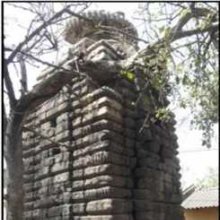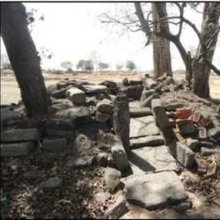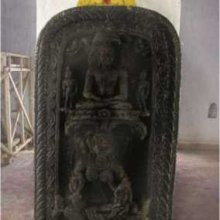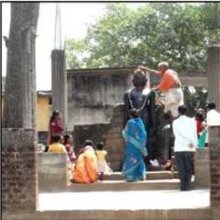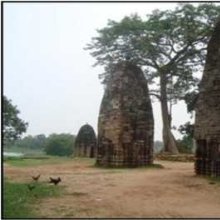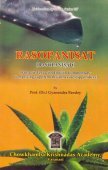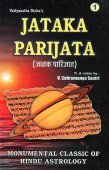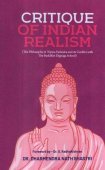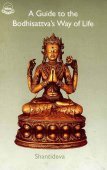Vii: 1 definition
Introduction:
Vii means something in Jainism, Prakrit. If you want to know the exact meaning, history, etymology or English translation of this term then check out the descriptions on this page. Add your comment or reference to a book if you want to contribute to this summary article.
Images (photo gallery)
(+4 more images available)
Languages of India and abroad
Prakrit-English dictionary
Source: DDSA: Paia-sadda-mahannavo; a comprehensive Prakrit Hindi dictionary1) Vii (विइ) in the Prakrit language is related to the Sanskrit word: Vṛti.
2) Vīi (वीइ) also relates to the Sanskrit word: Vīci.
3) Vīi (वीइ) also relates to the Sanskrit word: Vikṛti.
4) Vīī (वीई) also relates to the Sanskrit word: Vicicya.
5) Vīī (वीई) also relates to the Sanskrit word: Vicintya.
Prakrit is an ancient language closely associated with both Pali and Sanskrit. Jain literature is often composed in this language or sub-dialects, such as the Agamas and their commentaries which are written in Ardhamagadhi and Maharashtri Prakrit. The earliest extant texts can be dated to as early as the 4th century BCE although core portions might be older.
See also (Relevant definitions)
Starts with (+8): Viigiccha, Viigimcha, Viiginna, Viigittha, Viiinna, Viijjamta, Viijjamta, Viikinna, Viikkama, Viikkamta, Viimcia, Viimgala, Viimissa, Viimp, Viimta, Viimta, Viinha, Viinna, Viinna, Viitta.
Ends with: Anuvii, Anuvii, Artemisia bigelovii, Avii, Corydalis turtschaninovii, Ferula krylovii, Lonicera semenovii, Ocotea glaziovii, Ohre bvii, Pulsatilla turczaninovii, Salix skvortzovii, Selaginella willdenovii, Telitoxicum glaziovii.
Full-text (+3654): Vikriti, Vicintya, Vicicya, Agnendra, Vici, Tryaksha, Abhastraka, Gramika, Darbhakusuma, Darunasaptakaprayoga, Daksh, Maturity Knowledge, Ardhacita, Gandalekha, Atmabhuta, Pavitreshtisutra, Vishaharana, Tekari, Gotrabhunana, Tej.
Relevant text
Search found 262 books and stories containing Vii, Vīi, Vīī; (plurals include: Viis, Vīis, Vīīs). You can also click to the full overview containing English textual excerpts. Below are direct links for the most relevant articles:
Gati in Theory and Practice (by Dr. Sujatha Mohan)
Elucidation of Karaṇas related to Gati < [Chapter 2 - Concept and technique of Gati]
Gati used for the delineation of Bhāva and Rasa < [Chapter 3 - Application of gati in Dṛśya-kāvyas]
Analysis of technical terms: Nāṭya, Nṛtta, Nṛtya < [Chapter 1 - Nāṭya]
Harshacharita (socio-cultural Study) (by Mrs. Nandita Sarmah)
4. Economic Condition < [Chapter 6 - Other Socio-Cultural Aspects]
5. Agriculture and Agricultural Products < [Chapter 6 - Other Socio-Cultural Aspects]
Part 9.3: Elephantry (gajarathī): < [Chapter 5 - Political Aspects]
List of Mahabharata tribes (by Laxman Burdak)
Kavyamimamsa of Rajasekhara (Study) (by Debabrata Barai)
Part 4.1 - Nature and divisions of Vākya (literary speech) < [Chapter 5 - Analyasis and Interpretations of the Kāvyamīmāṃsā]
Part 4.2 - Ascertaintion and Division of Kāku (poetic intonation) < [Chapter 5 - Analyasis and Interpretations of the Kāvyamīmāṃsā]
Part 5 - Foundation of Kavi-śikṣā school < [Chapter 3 - Contribution of Rājaśekhara to Sanskrit Poetics]
Satirical works of Kshemendra (study) (by Arpana Devi)
5.20. The Wife of the Old Man (vṛddhabhāryā) < [Chapter 5 - Kṣemendra’s objectives of Satire]
5.8. The Singer (gāyana) < [Chapter 5 - Kṣemendra’s objectives of Satire]
8. Kṣemendra’s Focal Points < [Chapter 5 - Kṣemendra’s objectives of Satire]
Related products
(+7 more products available)
